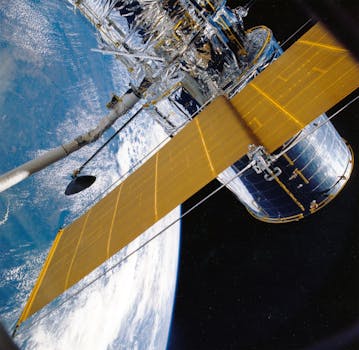
Navigating the Skies: Insights into Recent Satellite Telecommunications Innovations
Navigating the Skies: Insights into Recent Satellite Telecommunications Innovations. The satellite telecommunications industry has experienced significant growth and innovation in recent years, with the development of new technologies and services that are transforming the way we communicate and access information. One of the key drivers of this growth has been the increasing demand for global connectivity and the need for reliable and high-speed communication services.
The use of satellite telecommunications has become increasingly important for a range of applications, including broadband internet access, mobile communications, and navigation. The development of new satellite constellations, such as those being launched by companies like SpaceX and OneWeb, is expected to further increase the availability and quality of satellite telecommunications services.
Advances in Satellite Technology
Recent advances in satellite technology have been driven by improvements in materials, design, and manufacturing processes. One of the key innovations has been the development of smaller, more efficient satellites that are capable of providing high-speed communication services. These satellites are often referred to as smallsats or cubesats, and they have been designed to be launched into low Earth orbit, where they can provide communications services to a wide range of users.
Another area of innovation has been the development of new propulsion systems, such as electric propulsion and advanced ion engines. These systems have been designed to provide more efficient and longer-lasting propulsion, which is essential for satellites that need to maintain their position and velocity over long periods of time.
Impact on the Industry
The recent innovations in satellite telecommunications have had a significant impact on the industry, with many companies investing heavily in the development of new satellite constellations and services. The use of satellite telecommunications has become increasingly important for a range of applications, including broadband internet access, mobile communications, and navigation.
The development of new satellite constellations has also created new opportunities for companies to provide satellite-based services, such as satellite internet and mobile communications. These services are expected to play an increasingly important role in the provision of global connectivity, particularly in areas where traditional communication infrastructure is limited or non-existent.
Challenges and Opportunities
Despite the many innovations and advances in satellite telecommunications, there are still a number of challenges and opportunities that need to be addressed. One of the key challenges is the need for more efficient and sustainable propulsion systems, as well as the development of more advanced materials and designs.
Another area of challenge is the increasing congestion of the Earth’s orbit, which is becoming a major concern for the satellite industry. The launch of thousands of new satellites in the coming years is expected to exacerbate this problem, and there is a need for more effective management and regulation of the Earth’s orbit to prevent collisions and interference.
However, these challenges also present opportunities for innovation and growth, particularly in the development of new technologies and services that can help to address these challenges. The use of satellite telecommunications is expected to continue to play an increasingly important role in the provision of global connectivity, and there are many opportunities for companies to invest in the development of new satellite constellations and services.

